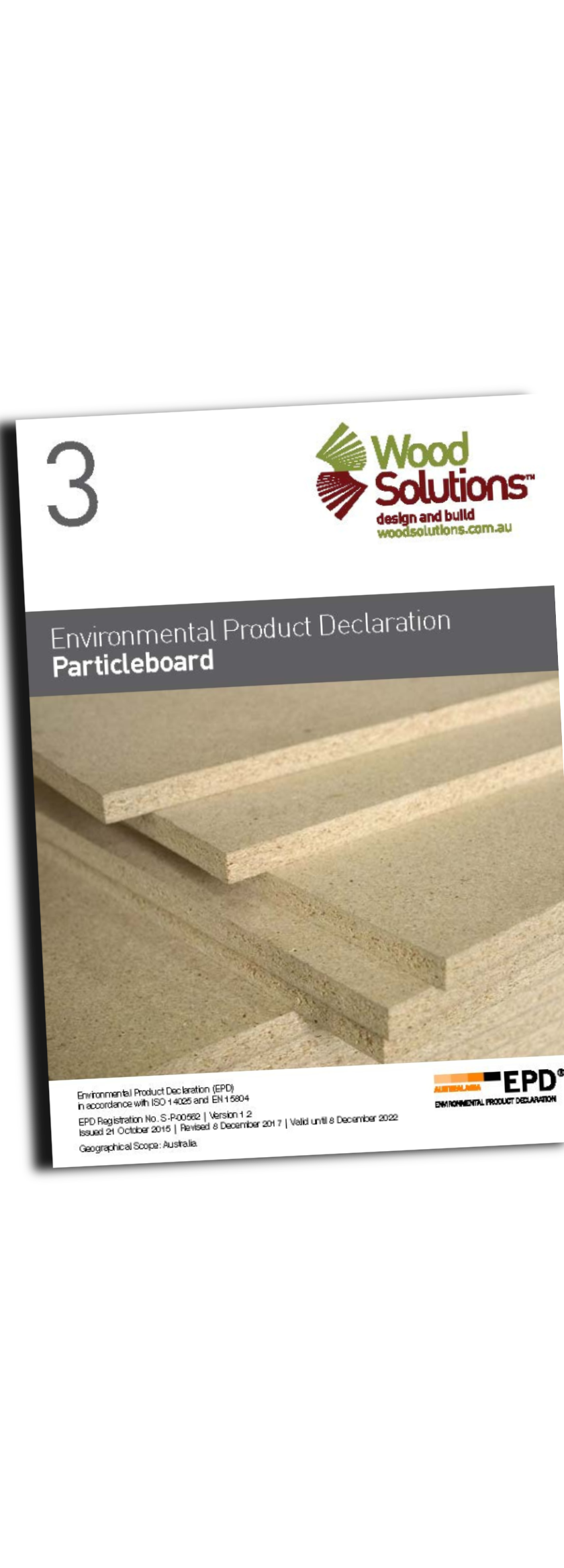Publications

(Updated February 2022)
This Environmental Product Declaration presents the industry-wide average performance of sawn timber from Australian grown softwood processed in Australia by members of Forest and Wood Products Australia (FWPA). It recognises the importance of transparency by providing information on the raw materials, production and environmental impacts of Australian softwood.
Product groups included in this EPD:
- Rough-sawn, kiln-dried softwood
- Dressed, kiln-dried softwood
Data is presented for untreated and preservative treated softwood products.

(Updated December 2020)
Product groups included in this EPD
- Rough-sawn, kiln-dried hardwood
- Dressed, kiln-dried hardwood
- Rough-sawn, green hardwood
Data is presented for untreated and preservative treated hardwood products.

(Updated December 2020)
Product groups included in this EPD
- Particleboard, 16 mm E0 & E1 standard melamine coated
- Particleboard, 18 mm E0 & E1 standard melamine coated
- Particleboard, 16 mm E0 & E1 moisture resistant (MR) melamine coated
- Particleboard, 18 mm E0 & E1 moisture resistant (MR) melamine coated
- Particleboard, 19 mm flooring (tongue & groove)
- Particleboard, 22 mm flooring (tongue & groove)
- Particleboard, 25 mm flooring (tongue & groove)

(Updated December 2020)
Product groups included in this EPD
- MDF, 16 mm E0 & E1 standard melamine coated
- MDF, 18 mm E0 & E1 standard melamine coated
- MDF, 25 mm E0 & E1 standard melamine coated
- MDF, 16 mm E0 & E1 moisture resistant (MR) melamine coated
- MDF, 18 mm E0 & E1 moisture resistant (MR) melamine coated
- MDF, 25 mm E0 & E1 moisture resistant (MR) melamine coated

(Updated December 2020)
Product groups included in this EPD:
- Exterior plywood, A-bond, 7 mm (bracing)
- Exterior plywood, A-bond, 9 mm (structural)
- Formply, A-bond, 17 mm (formwork)
- Formply, B-bond, 17 mm (formwork)
- Plywood flooring, tongue and groove, A-bond, 15 mm (residential)
- Plywood flooring, tongue and groove, A-bond, 25 mm (commercial)

(Updated December 2017)
Product groups included in this EPD:
- Softwood glulam
- Hardwood and cypress pine glulam
Data is presented for untreated and preservative treated glulam products.
Please register and login (it's fast and free) to download this document from the base of this page.

(April 2022)
This Environmental Product Declaration presents the industry-wide average performance of sawn timber from Australian grown white cypress processed in Australia by members of Forest and Wood Products Australia (FWPA). It recognises the importance of transparency by providing information on the raw materials, production and environmental impacts of Australian white cypress.